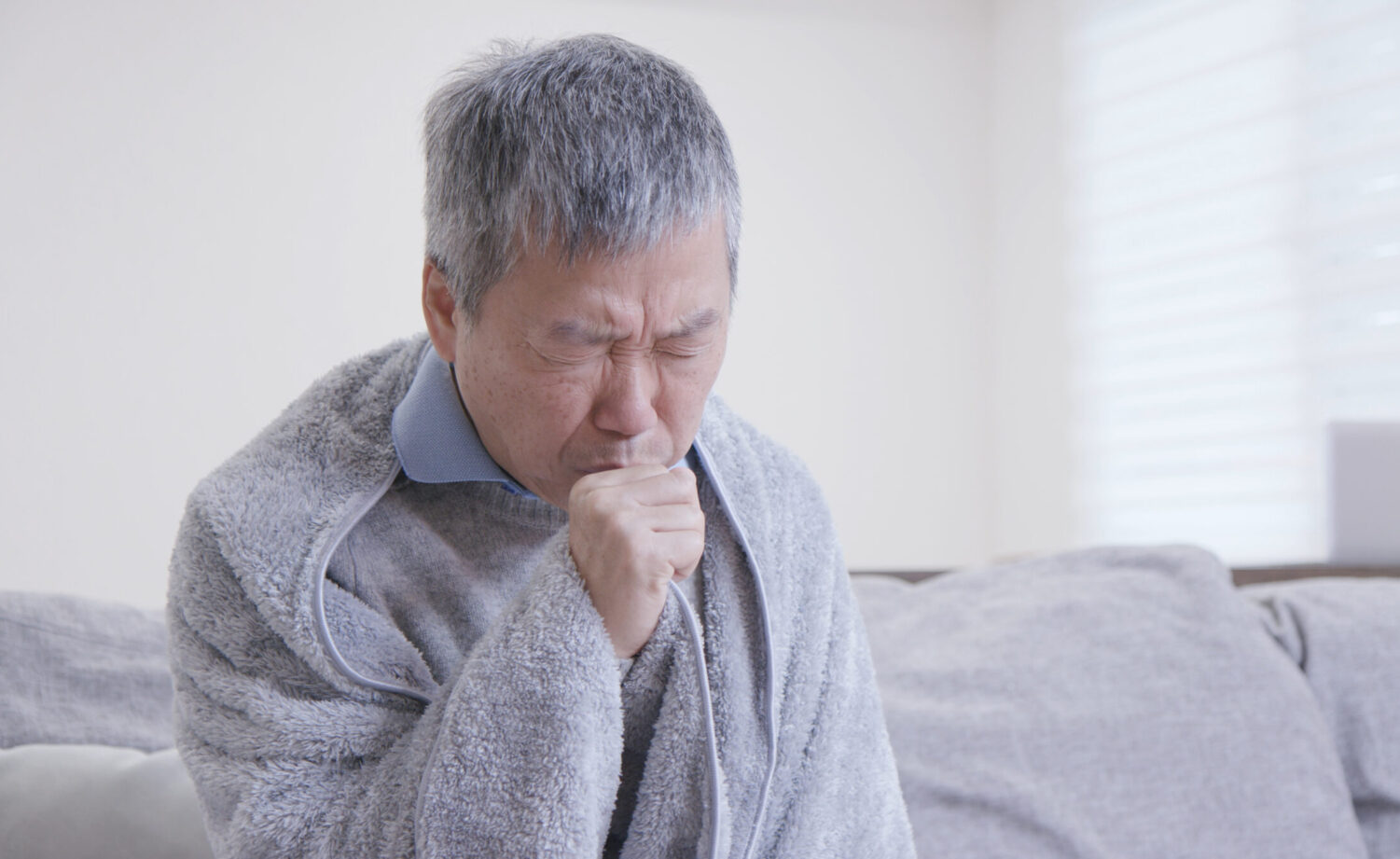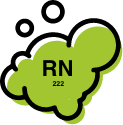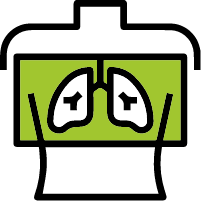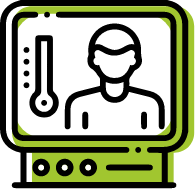Lung cancer is a type of cancer formed in the lungs. It happens when the cells in the lungs grow out of control and form a tumour1,2.

Don’t wait. Get checked for cancer today.
All hospitals have strict SOPs in place to keep you safe.


About Lung Cancer
There are two main types of lung cancers
- Non-small cell lung cancer (NSCLC) which constitutes approximately 80% – 85% lung cancers. The three main subtypes of NSCLC are adenocarcinoma (35%-40%), squamous cell carcinoma (25%-30%) and large cell carcinoma (15%)1,3.
- Small cell lung cancer (SCLC) which constitutes about 10%-15%, and tends to grow and spread faster1.
Lung Cancer Statistics
It’s the 3rd most common cancer in Malaysia, making up
10.6%
of new cancer cases in 20204.
It’s the deadliest cancer globally, accounting for
1.79
million
deaths in 20205.
Almost
95%
of lung cancers are diagnosed in advanced stages6.
Risk Factors7
Here are some of the factors that may increase your risk of developing lung cancer:

Smoking

Previous radiation therapy

Exposure to secondhand smoke

Exposure to radon gas

Family history of lung cancer

Exposure to asbestos and other carcinogens
Signs and Symptoms8
Many lung cancers don’t manifest with any noticeable signs or symptoms in its early stages, making early detection extra challenging. However, there are signs and symptoms you can look out for:

A cough that doesn’t go away, or gets worse

Feeling tired or weak

Coughing blood or rust-coloured mucus/phlegm

Infections like bronchitis or pneumonia that won’t go away, or keeps reccurring

Chest pain that worsens with deep breathing, coughing, or laughing

Loss of appetite

Shortness of breath

Unexplained
weight loss
Kindly discuss with your healthcare professional if you notice any of these signs or symptoms.
Download a cancer screening voucher
Lung Cancer Screening6,7,9-12
Most lung cancers were detected at the advanced stage due to the non-specific or minimal symptoms in most of the early stage lung cancer cases7,9. Thus, it is crucial to detect lung cancer earlier through screening to improve treatment effectiveness and cancer survival rate10.

Lung cancer screening:
- Low Dose CT Scan. An approach to produce detailed images of the inside of the chest, from different angles, by using a small amount of radiation and computer technology10.
Recommendation for lung cancer screening for people who meet the following conditions6,11,12*
- Aged between 45 to 75 years, and
- Have been smoking for 20 years or more
- High risk non-smokers (with a strong family history of lung cancer) may benefit as well.
*These criteria are recommendations based on the international NELSON and National Lung Screening Trials further refined with epidemiological data from local National Cancer Registry6,11,12. Currently there are no local guidelines on lung cancer screening criteria in Malaysia.
Diagnosing Lung Cancer9, 13

Lung cancer is diagnosed by the following methods:
- History and physical examination
- Imaging tests
- Chest X-ray.
- PET/CT/MRI Scan.
- Bone scan. Detects whether lung cancer has spread to the bones.
- Diagnostic tests
- Biopsy. The removal of a small amount of tissue for examination under a microscope.
- Endoscopic procedure. Procedures that allow healthcare professionals to see inside the chest cavity, space between lungs, airway, lungs and lymph nodes. Common endoscopic procedures performed for lung cancer are bronchoscopy, mediastinoscopy and thoracoscopy.
- CT guided percutaneous biopsy. When a needle is inserted from the outside of the chest to take a sample of lung tissue.
- Molecular testing/Mutation testing. Laboratory test to look for abnormal cell changes, which may be used to help guide treatment selection.
Lung cancer remains as one of the deadliest cancers due to the majority of cases being diagnosed late. So, if you’re at risk, get yourself checked and screened. Do consult a doctor if any of the signs or symptoms are present.
Remember, early detection can improve your chances of survival.
So, don’t wait.
Reference:
1. American Cancer Society. What is Lung Cancer? Available at: https://www.cancer.org/cancer/lung-cancer/about/what-is.html Last accessed 29 June 2021.
2. National Comprehensive Cancer Network (NCCN), 2020. NCCN Guideline for Patients – Lung Cancer Screening. Available at https://www.nccn.org/patients/guidelines/content/PDF/lung_screening-patient.pdf. Last
accessed 24 July 2021.
3. Lung Foundation Australia, 2012. Better Living with Lung Cancer – A Patient Guide. Available at https://lungfoundation.com.au/wp-content/uploads/2018/09/Book-Better-living-with-lung-cancer-2012.pdf. Last accessed 26
July 2021.
4. World Health Organisation (WHO). Malaysia (Source: Globocan 2020). Available at: https://gco.iarc.fr/today/data/factsheets/populations/458-malaysia-fact-sheets.pdf. Last accessed 29 June 2021.
5. World Health Organization (WHO). Lung (Source: Globocan 2020). Available at https://gco.iarc.fr/today/data/factsheets/cancers/15-Lung-fact-sheet.pdf. Last accessed 24 July 2021.
6. Ministry of Health. Malaysia Cancer Registry Report 2012-2016. (pg 17, 39).
7. American Cancer Society. Lung Cancer Risk Factors. Available at: https://www.cancer.org/cancer/lung-cancer/causes-risks-prevention/risk-factors.html. Last accessed 29 June 2021.
8. American Cancer Society. Signs and Symptoms of Lung Cancer. Available at: https://www.cancer.org/cancer/lung-cancer/detection-diagnosis-staging/signs-symptoms.html. Last accessed 29 June 2021.
9. American Cancer Society. Tests for Lung Cancer. Available at https://www.cancer.org/cancer/lung-cancer/detection-diagnosis-staging/how-diagnosed.html. Last accessed 29 June 2021.
10. National Comprehensive Cancer Network (NCCN), 2014. NCCN Clinical Practice Guideline in Oncology (NCCN Guidelines) – Lung Cancer Screening; Version 2.
11. de Koning HJ, Van der Aalst CM, de Jong PA, Scholten ET, Nackaerts K, Heuvelmans MA, Lammers JWJ, Weenink C, Yousaf-Khan U, Horeweg N, van Westeinde S, Prokop M, Mali WP, Mohamed Hoesein FAA, van
Ooijen PMA, Aerts JGJV, den Bakker MA, Thunnissen E, Verschakelen J, Vliegenthart R, Walter JE, ten Haaf K, Groen HJM, Oudkerk M. Reduced lung-cancer mortality with volume CT screening in a randomized trial. N
Engl J Med. 2020;382:503–13. DOI: 10.1056/NEJMoa1911793
12. National Lung Screening Trial Research Team, Aberle, D. R., Adams, A. M., Berg, C. D., Black, W. C., Clapp, J. D., Fagerstrom, R. M., Gareen, I. F., Gatsonis, C., Marcus, P. M., & Sicks, J. D. (2011). Reduced lung-cancer
mortality with low-dose computed tomographic screening. The New England journal of medicine, 365(5), 395–409. https://doi.org/10.1056/NEJMoa1102873
13. Lung Cancer Canada, 2006. Patient’s Guide to Lung Cancer. Available at https://www.lungcancercanada.ca/LungCancerCanada/media/Documents/Patient-Guide-to-Lung-Cancer-2017.pdf. Last accessed 26 July 2021.
Disclaimer
To learn if you are at-risk, contact 1-800-88-1000 For more information about hospitals: help@cancer.org.my
This site is intended for people at-risk of or living with cancer and members of the general public.
Date of preparation: September 2021 Please contact your doctor for advice if you are at all worried about any symptoms (or your medication).
About New Normal Same Cancer
New Normal, Same Cancer is an initiative that hopes to support and inspire all of us to prioritise our health as we battle with cancer amidst the pandemic.


